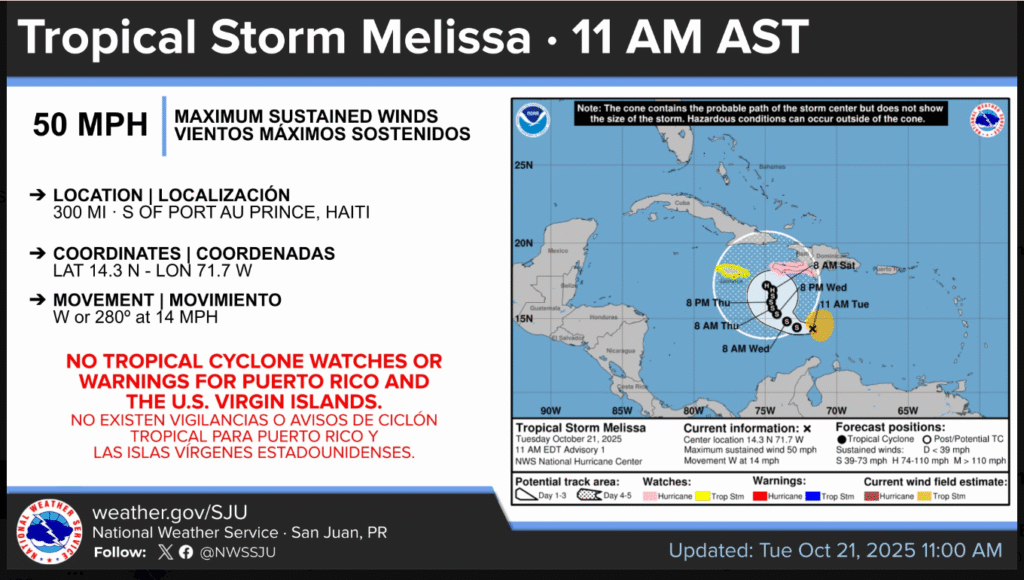KINGSTON — Confidence in the #TropicalStormMelissa forecast remains low beyond Day 3, the National Weather Service said this morning.
The U.S. Virgin Islands and Puerto Rico could get anywhere between 2–4” of rain through the weekend, according to the NWS.
Hazardous coastal and marine conditions will persist today across northern beaches and exposed Atlantic waters, the NWS said.
Large breaking waves up to 11 ft and life-threatening rip currents. Small craft should exercise caution, according to the NWS.
Caribbean Sea (Invest 98-L)
Satellite, radar, and surface observations indicate that the area of low pressure over the central Caribbean Sea appears to be developing a well-defined center, and is already producing winds up
to 45 mph.
A tropical storm is expected to form later today while it slows down over the central Caribbean Sea. Heavy rainfall and gusty winds are possible over portions of the ABC Islands during the next day or two.
Interests in Puerto Rico, Hispaniola, Jamaica, and Cuba should monitor the progress of this system as there is a risk of heavy rain and flooding, strong winds, and rough surf later this week. The Air Force Hurricane Hunters are scheduled to investigate the system later today.
For additional information on this system, including Gale Warnings, please see High Seas Forecasts issued by the National Weather Service.
* Formation chance through 48 hours…high…near 100 percent.
* Formation chance through 7 days…high…near 100 percent.
There is a high risk of rip currents in the U.S. Virgin Islands, Culebra, Vieques and across northern, western and northeastern Puerto Rico.
HIGH RIP CURRENT RISK REMAINS IN EFFECT THROUGH THIS AFTERNOON
* WHAT..Life-threatening rip currents.
* WHERE…Beaches of Vieques, and St Croix.
* WHEN…Through this afternoon.
* IMPACTS…Rip currents can sweep even the best swimmers away from shore into deeper water, where it becomes difficult to return to safety.
PRECAUTIONARY/PREPAREDNESS ACTIONS... There is a high risk of rip currents.
Rip currents are powerful channels of water flowing quickly away from shore, which occur most often at low spots or breaks in the sandbar and in the vicinity of structures such as groins, jetties and piers. Heed the advice of lifeguards, beach patrol flags and signs.
If you become caught in a rip current, yell for help. Remain calm, do not exhaust yourself and stay afloat while waiting for help. If you have to swim out of a rip current, swim parallel to shore and back toward the beach when possible. Do not attempt to swim directly against a rip current as you will tire quickly.

